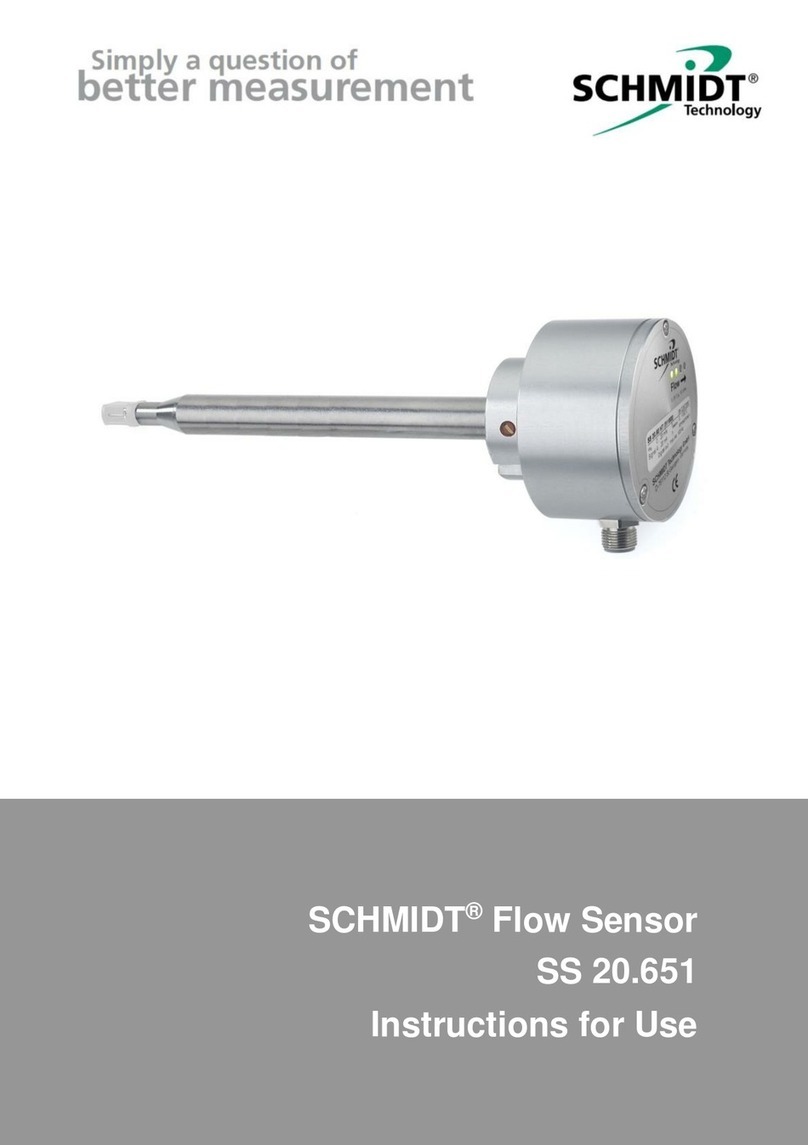Instructions for Use –SCHMIDT®Flow sensor SS 20.420 Page 3
1 Important Information
These instructions for use contain all required information for a fast com-
missioning and a safe operation of SCHMIDT®Flow sensor SS20.420.
These instructions for use must be read completely and observed care-
fully, before putting the unit into operation.
Any claims under the manufacturer's liability for damage resulting from
non-observance or non-compliance with these instructions will become
void.
Tampering with the device in any way whatsoever - with the exception
of the designated use and the operations described in these instruc-
tions for use - will forfeit any warranty and exclude any liability.
The unit is designed exclusively for the use described below (see chap-
ter 2). In particular, it is not designed for direct or indirect protection of
personal and machinery.
SCHMIDT Technology cannot give any warranty as to its suitability for
certain purpose and cannot be held liable for errors contained in these
instructions for use or for accidental or sequential damage in connec-
tion with the delivery, performance or use of this unit.
Symbols used in this manual
The symbols used in this manual are explained in the following section.
Danger warnings and safety instructions - read carefully!
The non-observance of these instructions may lead to personal
injury or malfunction of the device.





























